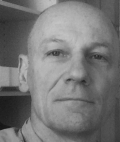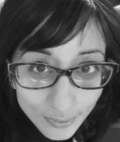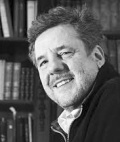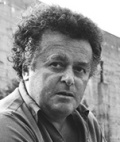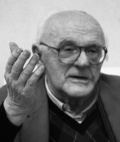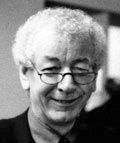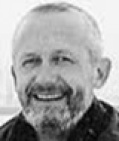Urs Freund, art theorist
Anu Shukla, journalist
An intense and complex artist, his dialogue using abstract forms, colour fields and an array of raw materials is both curious and intense. From canvas, wax and wood to steel, concrete and zinced iron, freedom is expression and with his fearless use of it, the artist presents a number of depictions sourced from his profound vision of reality.
Wolfgang Kehr, art historian
I classify Markus Schlee in the history of contemporary art as a neoromantic with diminished sentimentality.
I call Markus Schlee a dreamer who wants to dream the uomo universal once again – maybe he dreams him with a little self-mockery.
Walter Aue, curator
With the conceptual sculpture of Markus Schlee it is a matter of shifting the historical find in a new contemporary context so that the result is a coherent whole of the authentic-real element and the fictive and artificial “supplement”.
Enio Concarotti, art critic
In the work of Markus Schlee we meet the phenomenon of “animism of the things” that allows to the material, usually considered inert and obtuse, conditions and manifestations of autonomous vitality, a vitality that the special and mysterious eyes and sensitive radars of the artist can catch, understand and transform in shapes and expressive signs.
The projectual operation of Schlee is interactive between the own intimate personality and the personality of the matter, the object or the artefact that attracts his ray of sensitive attention. In a block of concrete, in a stele or tile of stone, in an any and humble wooden rafter, in the fragments of an old dismantled wooden barrel, the thoughts, sentiments, true emotions and deep sensations of the artist condense and come to life so perceptibly. The miracle of interpretation is born, so, of giving sense and meanings through tools of fantasic invention that are inexplicable equipment of the real artist.
In the emotional and rational sphere of Schlee there happen experiences of life that are “objectified” in their visible dimension. Each shape arises from an internal process and becomes an external result, appears not only of an severe analisis and pondered in the constituent relations (mathematic rhythms, spatial harmonies, perspective co-ordinates, and so on), but rather also offers a spiritual wealth, which with a poetic wing blow to an expressive turn, that at first sight communicates a certain mental-abstract definition.
Markus Schlee speaks to us in a dialectic language between concept and lyric emotion.
Lothar Romain, art historian
Markus Schlee draws pictures and forms sculptures, but he does not want that to be understood, so to speak, as a double profession in two special disziplines. He has never seen himself as a painter, sculptor or anything else, he informs us, but as an artist working in many different fields of art. But doing so he does not simply want to blend and combine the different genres or even deny them. This statement aims more at a central point of his artistic work qualifying not only his pictures but also his sculptures, even though: inevitabely, with different techniques. It always has to do with fundamental principles, with conditions and variability of our perception, with - as he says himself - "vehicles of impression and expression" - art as science, gesture and reflection.
Thus Markus Schlee is fascinated by the energetic potential of mass, by the substance of a hard, impenetrable body, which he wants to open up for perception without violating the massive unity, without holes or corridors into its interior, through which you could at least feel. Instead Markus Schlee concentrates completely on the surface of his solid bodies. The nature of these surfaces is made to impart the interior of the body, its physical nature.
Cubes made of concrete are the most common shape. The cubes in their right-angled form stand in this connection for a rational and culturally extremely important achievement of mankind, but also in the idea of the three right-angled co-ordinates as the classical definition of the continuum of space. The artist set metal, for example in form of poles into these solid cubes. Or he constructed the cubes out of plated concrete squares of the same size, between which he put sheet-zinc squares slightly larger in size, this sticking out and producing a grid through which a definite air space is created around the body.
Concrete as an epitome of mass, but of such you can cast, produced by technological means; is this an evident product of human achievement and metal as conductor set in on the surface or penetrating the cube regularly like an electric field. The cause tension being transferred from the surfaces of the sculptures into the free space around.
These substances of the bodies can reach outside (in imagination) without causing any loss of substance. Mass is experienced as tension and energy, but they do not simply flow away but stay inherent in the sculpture.
And yet one believes to hear a humming sound coming from between the sheet-zinc like that between power-lines, you even hesitate before each contact expect sparks. Thus an energetic area arises in the immagination that has the same effect as the transformation of mass into space and that includes the surrounding space instead of just taking it in.
Free space in comparison to that defined by mass, concealed by mass, challenges the artist over and over again to find new artistic definitions: in a classical sense as negative form of his solid bodies, but also as the infinite continuum of space conglomerating over and over again in different places into a body, that makes the actual infinity even clearer like a conjunction or a pars pro toto. Such is the function of the space sculptures, that set up free signs in space instead of mass and bodies and that abolish the borders between outside and inside as transparent forms.
Paintings communicate in their own way the critical preoccupation of the artist with reality and virtuality, with materialized reality and the reality of appearance. The surface of his pictures, as Markus Schlee once wrote down pointing out the correlation to his sculptures, is materialistic and at the same time intentional. They demonstrate the appearance of a world behind the surface and are at the same time, though, part of reality on and in front of the surface.
The reality of the pictures is therefore two-faced. It occurs for one thing and especially in the colour, which emphasizes its materialistic appearance without making it superficial. Applied in many thick layers on top of each other it developes virtually dimensions and the picture fluctuates conpearance and mass.
This fluctuation, though, is not on determined by informal tension, but is kept with forms such as circle, the sector of an oval or a helix drawn very broadly. The forms have a fundamental meaning in the works of Markus Schlee, just as the sculptures have: they mean just as the cube as a construction, the circle, too, in the sense of the surrounding area as a picture of our first, very simple perception and description of space and mean the shape of the almond as the most common form in living nature = fertility. That should not be seen as rigid symbolic painting but more as an unrestricted process pointing beyond the 'ratio' - just as the sculptures do.
The "portraits of girls" should be seen with the same attitude, as an attempt to create a certain balance in the picture determined by proportion and form, which expresses the impression the artist has of the person be portrayed. So it has nothing to do with the individual portrait with all its casualities the moment the picture is being drawn but for example with the relation of balance and unease, of sponteanity and reflection, as they show in one person and can be expressed in the paintings for example by condensation or expansion of the colours, by the quota of the different temperatures of colour, by the form fighting between order and constraint in a very sophisticated way, surpassing every possibility to express something with words.
Horst Sauerbruch, artist
It was from the beginning - and I know him for a long time - a unity: his presence, his person, his conversation and his pictures. These were paintings and drawings, torsi, before the objects.
His work developed authentic and real.
The gigantic remains mental, fragile. And this has always distinguished him.
He thinks and forms, he abstracts and, nevertheless, speaks, between the lines, coded in material, as a symbol, however strong and present, as well as he himself. Always.
